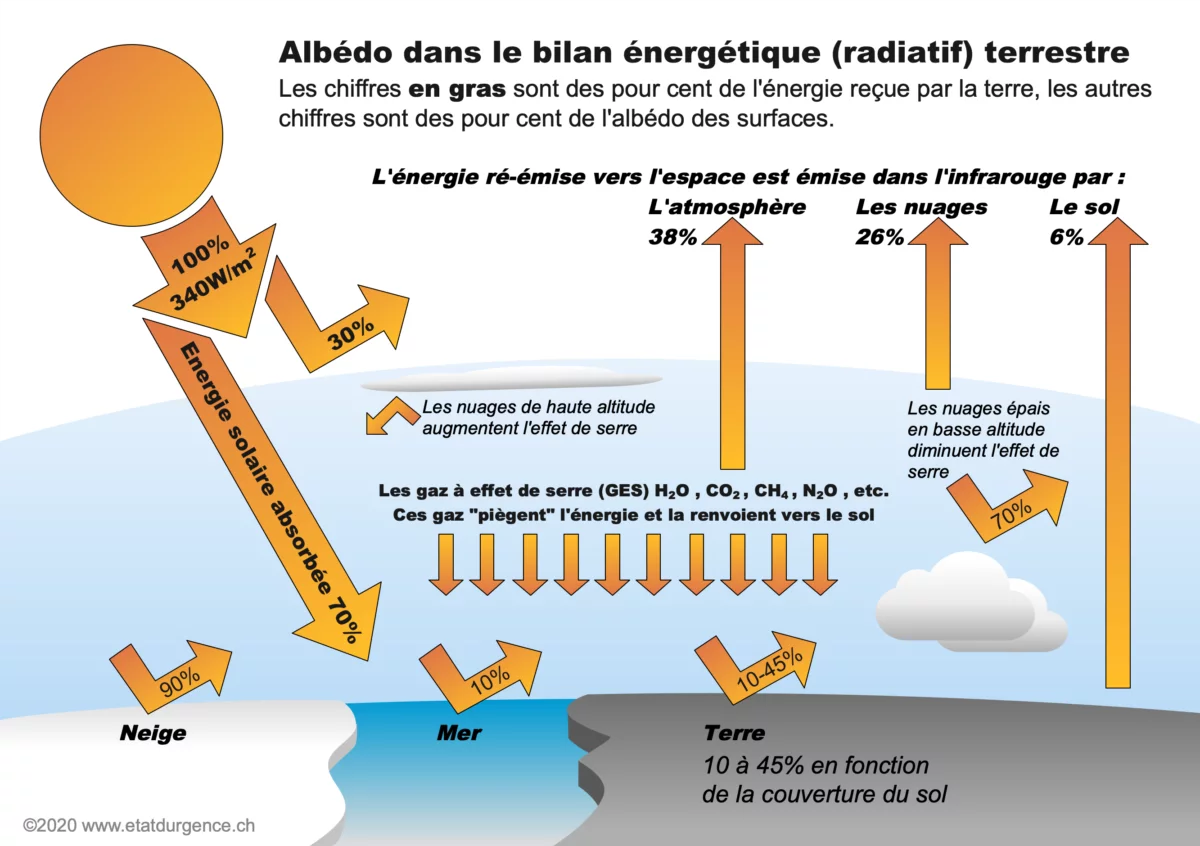Extreme cold
With global warming, Quebec winters tend to be milder than before. As a result, the cold season is shorter and the number of extreme cold events has been decreasing.
In the current climate, more deaths are associated with cold winter temperatures than hot summer temperatures. However, it’s projected that in the coming decades, global warming will cause that to reverse.
Definition | Extreme cold
The definition of extreme cold varies across Canada, depending on the local climate.
Environment and Climate Change Canda issues an extreme cold warning when the temperature or wind chill is expected to reach –38°C for at least 2 hours.
In northern Quebec, this warning is issued when the temperature or wind chill is expected to reach
–48°C for at least 2 hours. In Nunavik, the warning is sent when the temperature (or wind chill) reaches -52°C.
Factors behind extreme cold
Extreme cold events in Quebec are caused by a combination of factors, including:
Cold air masses
Large-scale atmospheric configurations
Local weather conditions
Cold air masses
The coldest days of winter occur when the Arctic air mass descends from Canada’s far north. This air mass, intensified by polar nights, moves by means of atmospheric currents such as the jet stream.
Normally, this current remains confined to the north of the country, but its undulations can sometimes be more pronounced, causing the air mass to migrate further south. Then, it sometimes crosses the Canadian prairies and reaches the east of the country, including Quebec.

Definition | Polar night
Polar nights are nights lasting longer than 24 hours, which occur seasonally in the Earth’s polar regions.
Large-scale atmospheric configurations
Extreme cold occurs mostly in mid to late winter when the water in Hudson Bay and James Bay is deeply frozen. This ice allows the air to stay cold and dry. Conversely, if this water were not frozen, it would warm and humidify the Arctic air.
These events are also often associated with high atmospheric pressure (anticyclones), meaning the sky is clear. The lack of cloud cover contributes to the cooling of the air, since clouds act as a barrier that prevents heat from escaping into space.
Local weather conditions
Snow insulates the soil, preventing it from warming the air above it. That means that very cold air is trapped close to the ground, favouring extreme cold.
The effects of climate change on cold temperatures
Climate change is leading to the melting of continental and sea ice, as well as a decrease in snow cover. These phenomena have the effect of reducing the albedo of the surface; in other words, its ability to reflect energy.
When they absorb more of the sun’s energy, surfaces heat up more, which in turn accentuates the melting of ice and snow (known as the ice-albedo feedback loop). This is one of the main factors contributing to the rapid disappearance of extreme cold in the higher and middle latitudes of the Northern Hemisphere.

Cold waves
A cold wave is an intense cold spell. It is usually characterized by a period of at least two consecutive days during which the minimum temperature drops below a specific threshold.
The impacts of a cold wave depend on the region and the time of year when it occurs. Extreme cold, combined with the suddenness of the temperature drop and the intensity of the cold, can have consequences of varying severity for agriculture, social and commercial activities, and human health. If wind accompanies the cold temperatures, some of the impacts can be amplified.
Cold wave thresholds in Quebec
Currently, cold waves do not have an operational definition in Quebec. Public health authorities rely on wind chill warnings issued by Environment and Climate Change Canada, whose thresholds are based on the risk of frostbite to exposed skin. These digital warnings trigger preventive measures for the health of the population due to the risks associated with cold temperatures.
The Institut national de santé publique du Québec is working on an alerting system that would warn health professionals of cold waves. One of the key pieces of information conveyed would be related to temperature thresholds, which vary depending on the region and the timing, since the risks associated with cold weather decrease later in the season as people acclimatize to winter.